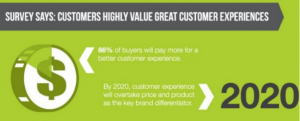I recently had the pleasure of recapping the crests and troughs that the search engine optimization and search marketing industry went through in 2014 on Tweak Your Biz. While we’re well into February 2015, it is never too late to look back, contemplate on what could have been, learn our lessons, and envision what the future holds in store.
Let’s revisit five changes that Google brought about in its algorithm last year that were very, very significant in terms of their impact.
1. Google Authorship Gone
Building a strong Google Authorship reputation used to be one of the key elements to win the rankings race on Google. Introduced in 2011, Google’s search results pulled data from the author’s Google+ profile and displayed the name, picture and a short rich snippet of the author of the piece in question. The perceived logic was that an article that linked back to a strong, reputed author profile, could get a rankings boost.
However, as with a ton of other features that have bitten the dust in Google’s armory, Authorship was on its way out by the end of 2013. In 2014, Google first experimented with dropping the pictures of authors in their search results. In a couple of months more, Authorship itself was dropped altogether.
What this means for you:
This means there is no longer any ranking or visibility benefit in adding authorship markup to your content. Effectively, rel=”author” is now meta name=”keywords” and continuing to tell yourself “It was used in the past, so they might decide to use it again,” or “Yahoo might be using it,” will only serve to hold you back from moving on with other priorities.
However, this does not mean that the reputation of the author is irrelevant. Author rank, as it is informally called in SEO circles, refers to the authority that each author wields with respect to their core area of competence. Articles that carry bylines of reputed authors could be correlated with a leg up in rankings, even without the authorship markup. So, continue to work on building a strong reputation as an authority in your field of interest.
2. Right to Be Forgotten Debate in Europe
A hugely controversial law that has as many supporters as opponents, the EU’s “Right to Be Forgotten” law was put to the test in Spain’s National High Court in May 2014. A case brought forward by a Spanish petitioner regarding the removal of an article regarding a foreclosure auction on his home led to Google being directed to comply with the EU law on an immediate basis. As on 1st December 2014, Google had received over 174,000 requests to delete links to online information from its search results. Yahoo and Bing too followed suit soon after.
What this means for you:
Currently enforced strictly in the European Union, this is a contentious law that is applicable in a handful of other countries on a case to case basis. The good news for marketers, PR agencies and reputation managers in the EU is that they now have the option of removing links that are defamatory or damaging to their clients by submitting a right to be forgotten request to a site like Forget.me.
3. Page Layout Algorithm Refreshed
We all know that stuffing one’s website with ads in a revenue hungry spree is terrible for the site’s reputation. This common sense principle that most high authority sites adopt is something that has become a must-do for all sites across the board. Google introduced its Page Layout Algorithm in 2012, and refreshed it again in 2014 to target sites that are sparse on content but heavy on ads, especially above the fold. Such sites started seeing a sharp decline in rankings and visibility from February of 2014, coinciding with the refreshing of the Page Layout algorithm.
What this means for you:
Your site must talk about YOU. Ads and external links – paid or otherwise – are secondary. If you must have ads on your site, make sure that they don’t make your site top heavy. Ensure enough white space on every page, limit the number of ads per page and most importantly, promote your own content instead of the ads of other brands.
4. Payday Loan Algorithm Refreshed
Running low on funds as the month nears an end? You’re not alone. The solution to a last minute funds-crunch for many is a low value loan (usually under $ 500) from small-time lenders at seemingly low rates of interest. The loans are paid off on every “payday” straight from your paycheck. Welcome to payday loans.
The business of payday loans is so lucrative in certain countries like the UK, that keyword terms such as payday loans and payday loans near me have given rise to a cottage industry of spammers. Elaborate link schemes are created around these queries, leading to top rankings for incredibly spammy websites. Google’s original Payday Algorithm release in 2013 sought out and banished sites that conned Google’s search bots into ranking over-optimized spammy sites that used queries related to payday loans, casinos, gambling, pornography, etc. 2014 saw Payday Loans Update 2.0 and 3.0 being unleashed back to back to crack down further on such sites and queries.
What this means for you:
Granted that you stick to the straight and narrow when it comes to optimizing your site for search engines. However, ignorance is no excuse if your site rankings take a nosedive thanks to Google’s Payday algorithm. All you need to do is keep it simple – avoid participating in shady link building schemes that even remotely try to game the search algorithms. Do not bid on spammy queries like the ones described above. Ensure you don’t have links on your site with exact anchor text related to loans, porn or gambling. Most importantly, conduct regular site audits to vet the sites you get links from and link out to – their reputation can have a domino effect on yours too.
5. Expedia and eBay Hit by Massive Ranking Drops
In two separate cases, giant brands Expedia and eBay got severely hit by Google’s ranking algorithms. Expedia lost 25% of its visibility in search rankings after Nenad SEO outed them towards the end of 2013. Nenad brought to the fore Expedia’s spammy link building techniques like getting an army of content writers to specifically create content that links back to their site. Obviously, this tip-off sent Google snooping around Expedia with disastrous results for its search marketing.
A few months later in May 2014, eBay suddenly dropped out of the Big 10 rankings of websites maintained by Moz and plummeted to number 25 in just three days. As Dr. Peter Meyers of Moz identified, the biggest drop happened for category pages, as opposed to the home page or product pages. In a related piece, Rishi Lakhani attributed the drop to eBay’s internal link structure and the fact that the search URLs that showed up in Google’s SERPs were made for just that – showing up on SERPs. The reality was that eBay was awash in these “/bhp” pages which were not accessible directly by any customers that landed on eBay’s homepage.
What this means for you:
If Google does not hesitate to penalize biggies like Expedia and eBay, you realize that your site is small fry for them. Avoid spammy SEO tactics like carrying out bulk guest posting, buying links, and inundating your site with inaccessible pages. Stay away from any activity that could be remotely construed to have the sole purpose of helping you rank well on Google searches.
The Road Ahead
Make no mistake. A large and significant part of SEO is still about rankings. Rand Fishkin – the Wizard of Moz – said one of the lessons he learnt in 2014 is,
“Rankings continue to matter more and more for SEO, despite my sense a few years back that they were on the way out.”
My interpretation of this, based on the evolving SERP landscape, new and unconfirmed signals (such as Authorship above), and their combined influence on search CTR, is that marketers need to change their thought process from the ground-up and move nimbly to stay on top of three fundamental shifts that became more pronounced last year:
- Google rarely shows the same rankings twice. Logging out of Google, browsing incognito, or depersonalizing the query by adding pws=0 to the search URL doesn’t cut it anymore. Google decides what to show based on your device, location (IP-based) and most importantly, intent.
- “Google ranking” is no longer an isolated concept. You need to monitor the various types of rankings Google gives your web properties (as opposed to your site). This could be a web search listing, a reference in an answer box, a local listing, or even a YouTube video (which is after all, a Google property) tied to your Google+ profile. All the major and oft-used rank monitoring tools are having trouble discerning these variations accurately; however, one that does alert you to these differences is RankTrackr.
- There’s more to search than Google. There are search engines in places where you’re not looking. There are search engines that look nothing like Google, embedded in other web, mobile and social platforms.
What are your thoughts? Please share them in the comments.
(473)
Report Post





